Why Packaging Doesn’t Matter
Ritchey’s responsible packaging for its bike components is vital to the brand’s identity. Here Ritchey explains why packaging doesn’t matter.
Ritchey developed its responsible packaging to be cost-effective, efficient for shipping, and sustainable. What’s more important, however, is what’s inside the packaging. So why did Ritchey invest time and money in something that will ultimately be thrown away? Here’s what you’ll learn in “Why Packaging Doesn’t Matter:”
- How packaging gets outdated
- “Beware of the plastics”
- Where packaging does matter: cost
- Enough with the unboxing!
- Ritchey’s paper trail
- The simple pillow box
For someone who’s dedicated their entire professional existence to the science of packaging, “why packaging doesn’t matter” is fighting words. Ultimately most product packaging gets tossed (to the tune of 82.2 million tons, according to the most recent data from the U.S. Environmental Protection Agency), yet packaging has a corner office in the design world. Product packaging is the silent salesperson – the brand rep – who has stuck by the credo, “Win at store shelves.” But then came e-commerce, and flashy packaging got Ctrl+Alt+Deleted in favor of more practical packaging. Ritchey changed its packaging too — several years ago, in fact. Not because we had to but because we wanted to.
How packaging gets outdated
Product packaging has been around for hundreds of years as a way to advertise and safely transport what’s inside. Ritchey’s previous packaging was designed more for display in an era when brick-and-mortar shops placed larger orders and displayed their offerings on shop walls for the customer to easily see. This worked well for Ritchey, which was already a buzzy brand in tech zones, at start lines, and in between the course tape. Ritchey’s packaging made a statement to anyone who walked into a bike shop. It said, “Come over here, this is what you’re looking for.”
These packaging solutions were designed for a sales model that’s since become outdated. Gone are the days of massive product displays with Ritchey’s omnipresent logo. Now, shrinking retail space, online shopping, and lightning-quick shipping methods have sparked a new kind of competition to enamor shoppers and convince them that Ritchey was indeed, what they were looking for all along. What matters is product imagery, price, and the user experience. Packaging wasn’t even a blip in the front-facing, direct-to-consumer shift but, as online sales started to shoot up, shipping handlebars, stems, headsets, seatposts, saddles, and framesets became a 3-way game of pong between efficiency, cost-effectiveness, and later, sustainability.
“Beware of the plastics”
Ritchey ships several hundred thousand products to end consumers each year. If each of those items is shipped in plastic, that adds up to more than a quarter million pieces of plastic that can end up as waste. There was no way Ritchey was going to contribute to that tower of trash. We started strategizing responsible packaging that would reduce our environmental impact and lessen the resources required to ship products around the world.
Where packaging does matter: cost
Cost intrudes upon every step of the packaging journey, from concept to design to production. The cost of packaging is ultimately paid by the consumer — it increases the price of the product, and that's why it matters. Packaging is vital to protecting the product from the start, so that it reaches the consumer in perfect condition. Any piece of packaging that isn’t essential to protecting the product, adds nothing to rider enjoyment throughout the life of the product. Anything added to packaging that doesn’t protect the product is like an extra tax that we’d charge to the consumer. This is something Ritchey did not want to do.
Now that you know how packaging factors into the product price, how glamorous would Apple’s so-called “minimalist” packaging be if you knew how much it cost you?
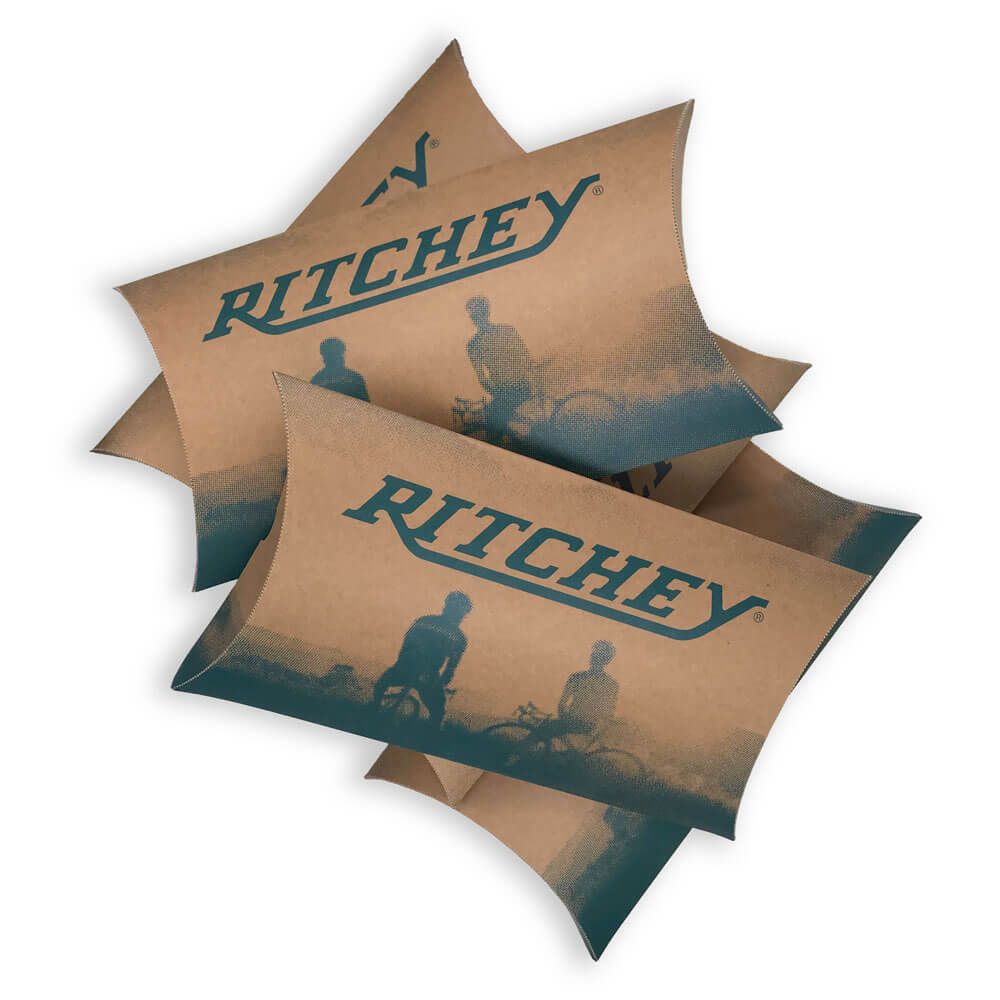
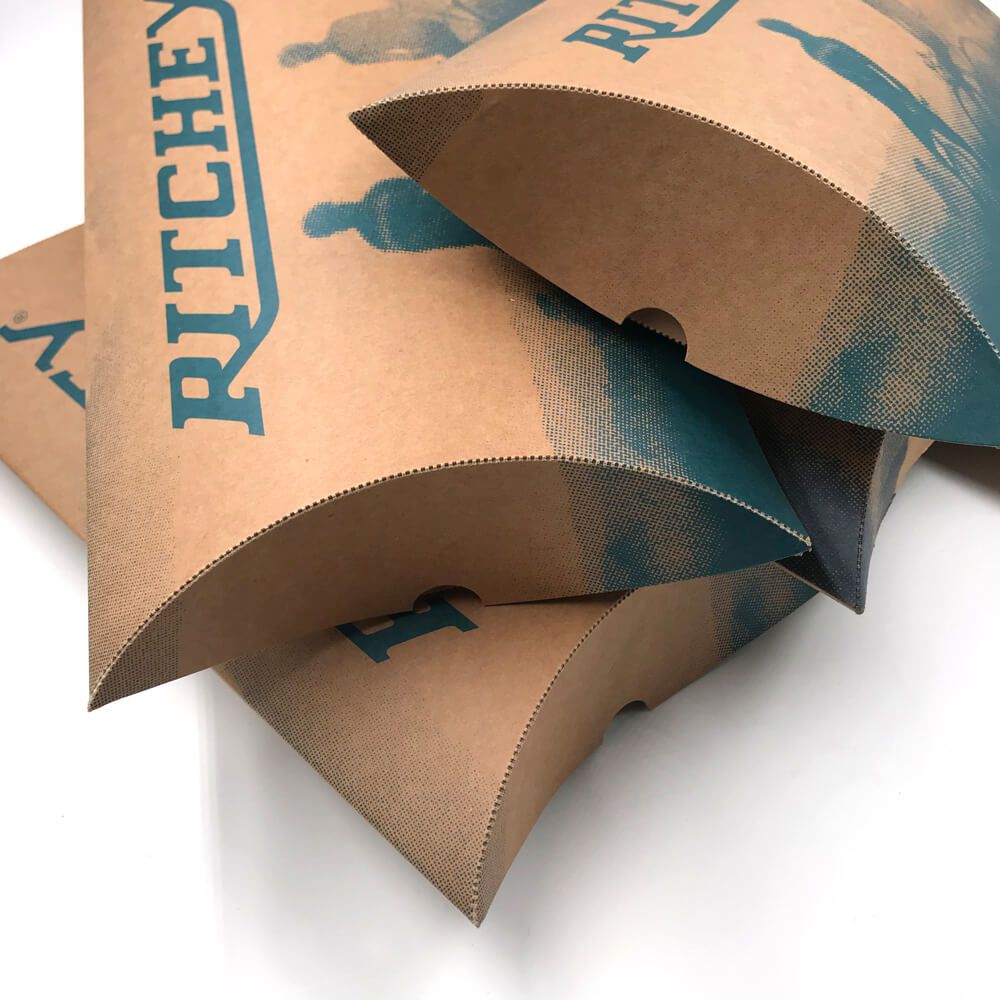
Enough with the unboxing!
We can thank D2C commerce and social platforms for the rise of unboxing videos, which succeed in building excitement for new products and documenting waste all at once. Admittedly, these formats are useful for electronic devices, things that require assembling, and — if you’re a kid — toys. The format is less useful for products like bike components, where the excitement is in riding with them once they’re installed on your bike.
Ritchey’s paper trail
For as “green” as cycling claims to be, the production and shipping of bicycles and components require a lot of natural resources. Ritchey made it a priority to make its packaging more efficient, resulting in less of an ecological footprint on the planet. This launched Ritchey on a paper trail to develop recyclable packaging with a minimalist aesthetic that offered a clean design and eliminated the need for environmentally unfriendly inks and varnishes.
Ritchey also mandated that its packaging be cost-effective, and of course, logical. Now, small parts like bearings, clamps, and bolts are shipped in thick paper envelopes. By substituting paper for plastic, not only did Ritchey minimize its plastic use, but paper packaging also turned out to be lighter than plastic. A weight savings of a few grams here and there made good business sense as well. For larger parts, Ritchey needed an alternative to bulky square and rectangular boxes.
“Sometimes, when you’re given tight limitations you can be more creative,” said Fergus Tanaka, Ritchey Design marketing manager. “They can act like bumper lanes to guide toward a solution. If you’re not given limitations, then it’s harder to produce something. In this instance, we very much had limitations in the form of material durability, cost and of course being responsible.”

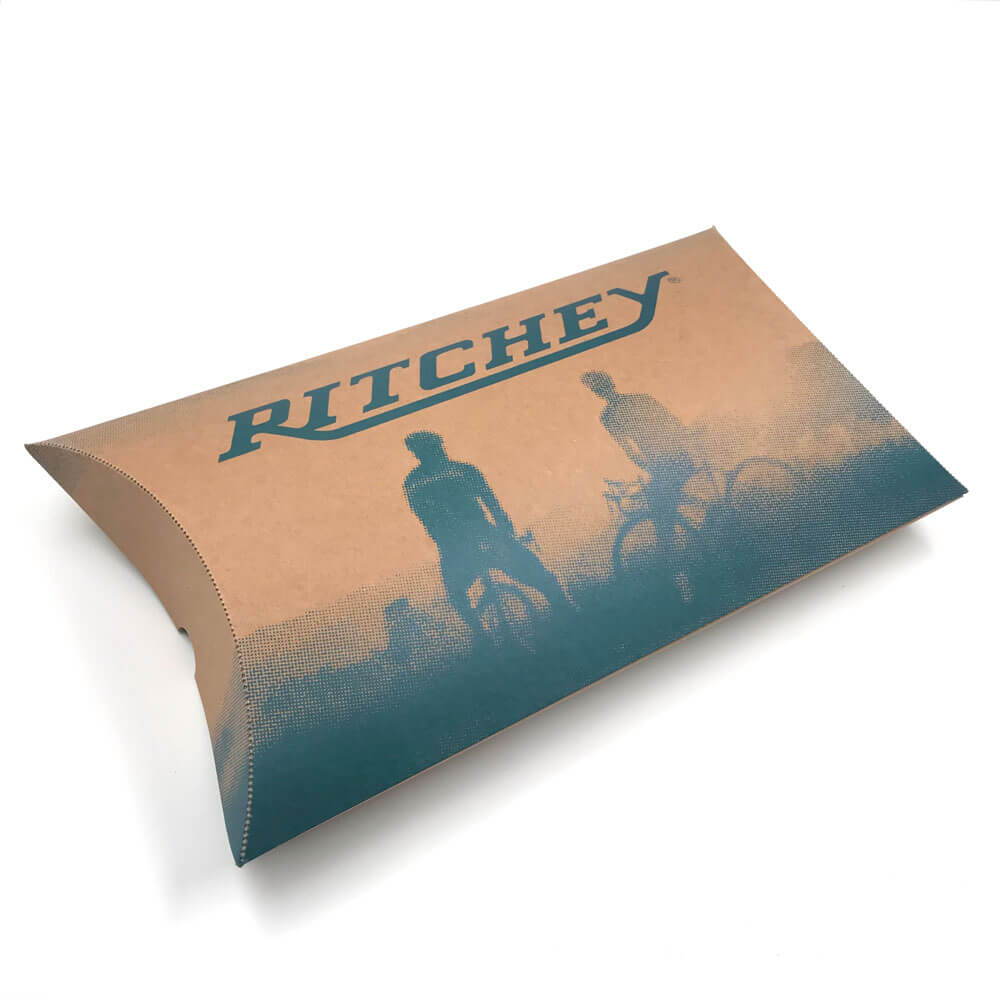
The simple pillow box
Ritchey found inspiration in the fruit pies sold at a fast food restaurant. The simple pillow box incorporates curved folds, which occupy less volume than cuboid boxes when folded flat or expanded for shipping. Pillow boxes also require less fortifying material, like adhesive tape, to make them stable. Ritchey uses pillow boxes to ship stems, seatposts, saddles, and pedals. Each Ritchey pillow box is minimally marked with a single-color logo and a product sticker, thus making each product shipped by Ritchey as lean and low-impact as possible.
Keeping it simple
Ritchey couldn’t declare this project successful unless most of its product packaging met the criteria for responsible packaging. (In the spirit of full transparency, Ritchey hasn’t been able to completely eliminate plastic packaging — only reduce it to a thinner version for shipping handlebars.) Some of the ways in which Ritchey has achieved its goal is through simple backer cards for grips and cages and small boxes for headsets.
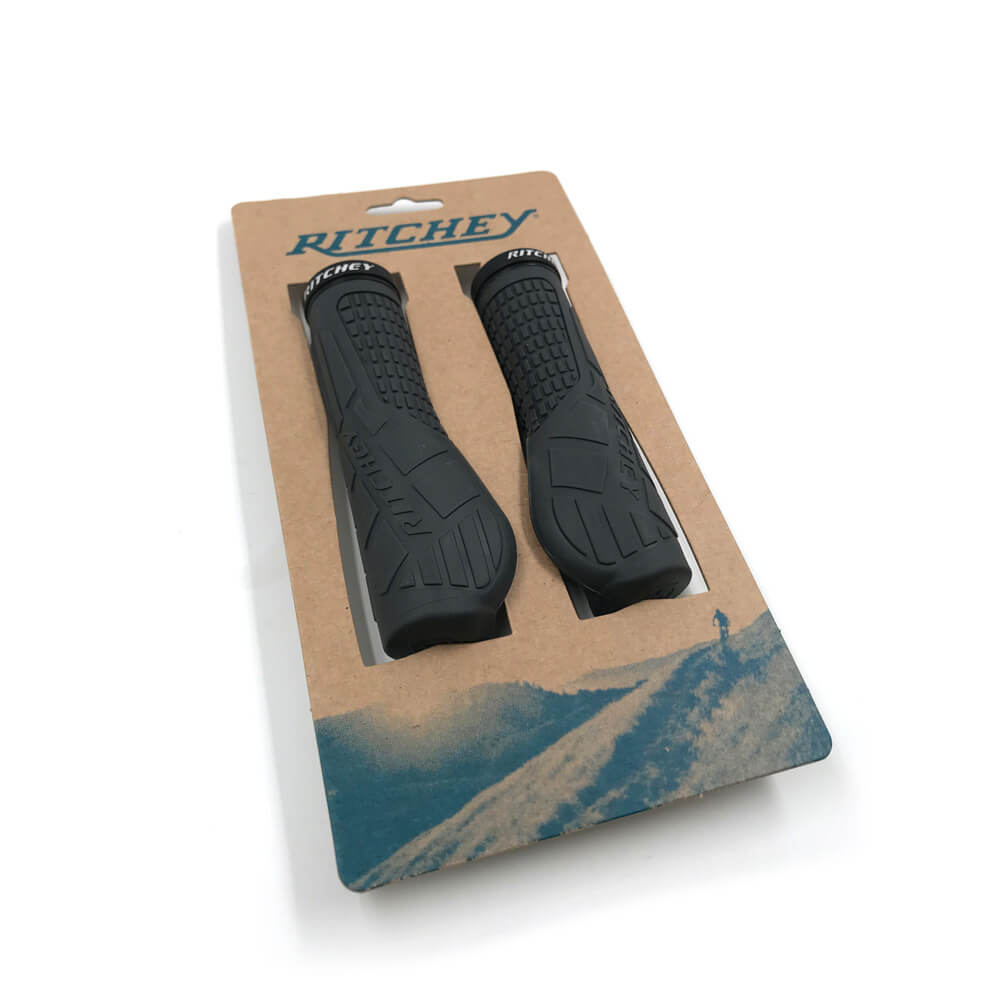
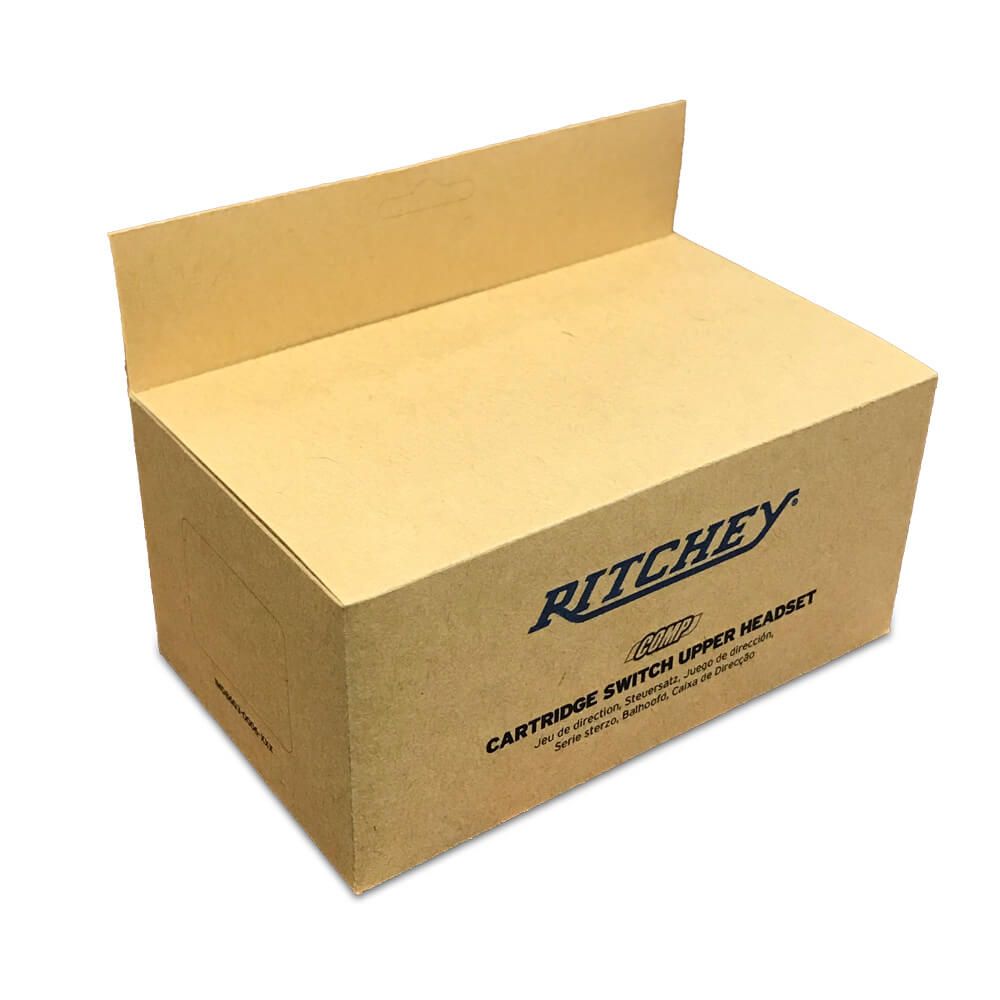
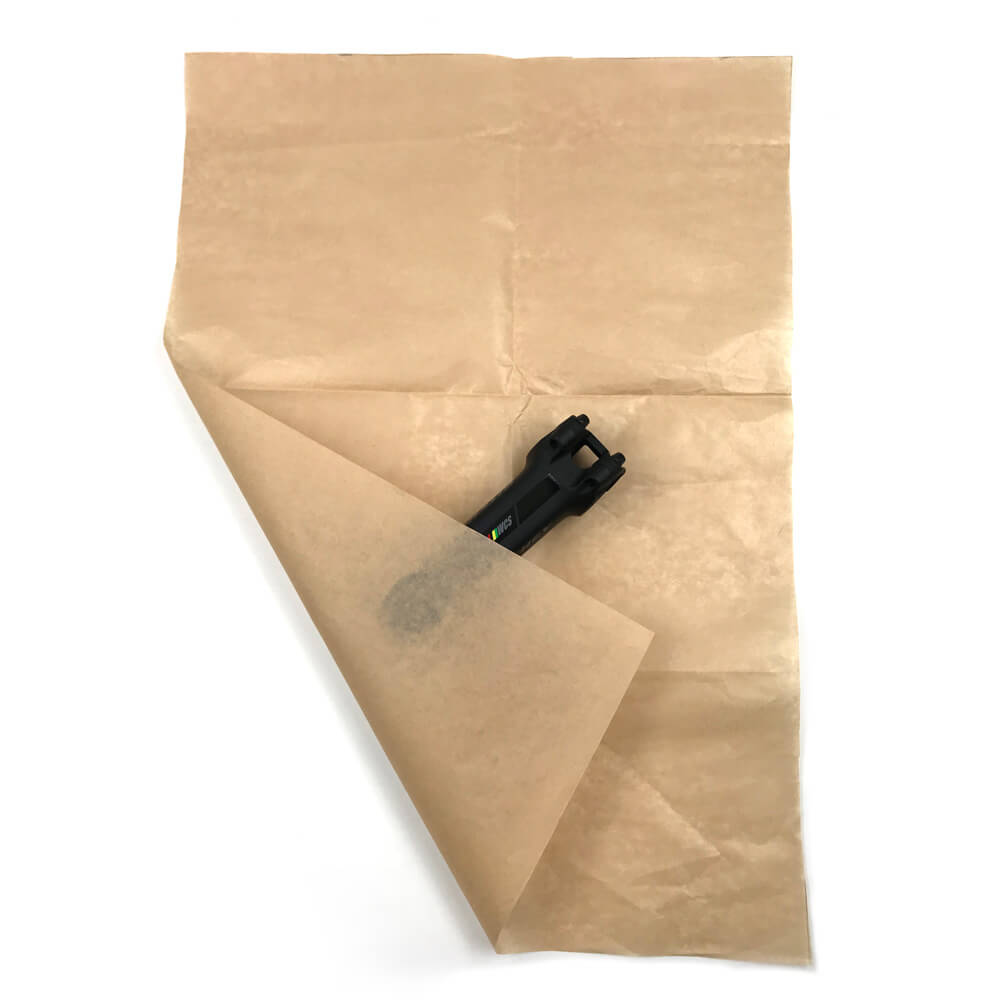
Ultimately, practical choices for packaging must have a real benefit to customers. When Ritchey began evaluating its packaging, it was the customer who was central to the choice to deliver Ritchey products to them safely and unharmed in the most sustainable, practical packaging available.
It's been more than four years now since Ritchey changed its packaging and we’ve been pleasantly surprised by how many people have tagged Ritchey on social media saying, “Hey, this packaging is cool. I really like what’s going on here.” What matters about packaging isn’t the product’s exterior, but what’s inside. But more than that, it’s about what’s getting delivered to the customer. Along with their order, the customer is getting 50+ years of proven design and craftsmanship, and a legacy of logical decisions painstakingly made by Tom Ritchey himself. It’s all part of the package.
Related articles
Join now for engaging stories, exclusive offers and product news delivered right to your inbox.


